I have some code that fills two lists using a function, called function, that returns two values. The function requires some parameters that are located within a row of the dataframe. Then I append the lists to a new column in my dataframe.
data = [[45, 'F', 'Jill', 'USA'], [87, 'm', 'Jeff', 'Poland'], [99, 'M', 'Tim', 'Peru']]
df = pd.DataFrame(data, ['Age', 'Sex', 'Name', 'Location']
new_column1 = []
new_column2 = []
for member in tqdm(range(len(df))):
list1, list2 = (function(df['Age'][member], df['Sex'][member], df['Name'][member], df['Location'][member]))
new_column1.append(list1)
new_column2.append(list2)
I am wondering if there is a faster way to do this using apply. I threw in tqdm because everyone likes to know how long they have to wait. For what it's worth, the output of the function is a float and a list.
Is there a better way to do this? I get the feeling that this is a little basic and I want something elegant and efficient. Is there a way to do this using apply? I would like to eventually use the swifter package at some point.
Update
I do not understand why this doesn't work.
df[['New_column1', 'New_column2']] = df[['Age', 'Sex', 'Name', 'Location']].swifter.applymap(function)
I am getting an error that the function is missing 3 required positional arguments: 'Sex', 'Name', and 'Location'.
